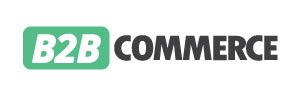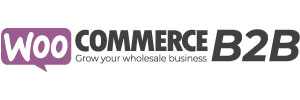In today’s digital age, having an online store has become a necessity for any business that wants to succeed. E-commerce is growing at an unprecedented rate, and South Africa is no exception. According to a report by Hootsuite and We Are Social, South Africa has 22 million active internet users, making it a fertile ground for e-commerce businesses. However, for your e-commerce business to succeed, you need to have the right tools and strategies in place. One of these tools is Sage 300 and Shopify integration.
Sage 300 is a powerful enterprise resource planning (ERP) software that helps businesses manage their finances, inventory, and operations. On the other hand, Shopify is a leading e-commerce platform that enables businesses to create and manage their online stores. By integrating Sage 300 and Shopify, businesses in South Africa can streamline their operations, reduce errors, and improve their overall performance.
In this article, we will explore how integrating Sage 300 and Shopify can help take your South African e-commerce business to the next level.

Streamline Operations
One of the main benefits of integrating Sage 300 and Shopify is that it helps streamline your operations. When you integrate these two systems, you can automate your business processes, reducing manual data entry and the risk of errors. For example, you can automate the transfer of data between Sage 300 and Shopify, such as orders, inventory, and customer data. This ensures that your inventory levels are always up-to-date, and your customers have accurate information about product availability.
In addition, integrating Sage 300 and Shopify allows you to streamline your financial operations. You can automatically transfer sales data from Shopify to Sage 300, which can help you generate invoices, process payments, and reconcile accounts. This can help you save time and reduce the risk of errors, freeing up time and resources to focus on growing your business.
Improve Inventory Management
Inventory management is a critical aspect of any e-commerce business. With the Sage 300 and Shopify integration, you can streamline your inventory management processes, reducing the risk of overstocking or running out of stock. You can automate the transfer of inventory data between Sage 300 and Shopify, ensuring that your inventory levels are always up-to-date.
By having accurate inventory data, you can make better decisions about when to reorder products and how much to order. This can help you reduce carrying costs and improve cash flow. You can also use the data to identify which products are selling well and which ones are not, allowing you to adjust your inventory strategy accordingly.
Enhance Customer Experience
Customer experience is a crucial aspect of any e-commerce business. By integrating Sage 300 and Shopify, you can enhance your customer experience by providing accurate and up-to-date information about your products and services. You can automate the transfer of customer data between Sage 300 and Shopify, ensuring that your customers have access to accurate information about their orders, shipping status, and more.
In addition, you can use the data to provide personalized customer experiences, such as targeted promotions and recommendations. By having access to customer data, you can also identify trends and patterns in customer behavior, allowing you to make informed decisions about your marketing and sales strategies.
Improve Reporting and Analytics
Integrating Sage 300 and Shopify can also help improve your reporting and analytics capabilities. With the integration, you can generate reports on sales, inventory, and financial data, providing you with insights into your business performance. You can also use the data to identify trends and patterns, allowing you to make informed decisions about your business strategy.
In addition, you can use the data to forecast future sales and inventory needs, allowing you to plan ahead and stay ahead of the competition. By having access to accurate data, you can make better decisions about how to allocate resources and invest in your business.
In conclusion, integrating Sage 300 and Shopify can help take your South African e-commerce business to the next level. By streamlining your operations, improving inventory management, enhancing customer experience, and improving reporting and analytics, you can improve your overall performance, reduce costs, and increase revenue.
However, it’s essential to note that integrating Sage 300 and Shopify is not a one-time task. You need to ensure that the integration is maintained and updated regularly to avoid errors and ensure the smooth running of your business processes. As such, it’s vital to work with an experienced integration partner who can help you implement and maintain the integration.
With the right tools and strategies in place, your South African e-commerce business can thrive in today’s competitive digital marketplace. By integrating Sage 300 and Shopify, you can stay ahead of the competition and achieve long-term success.
Contact our Storehub.io sales team to book a consultation.
See More On:












